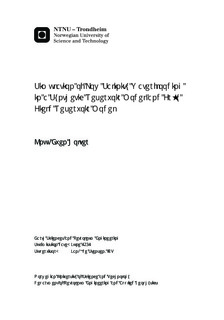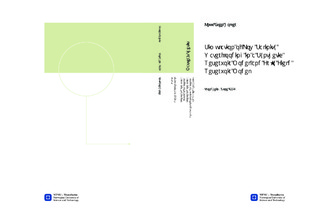| dc.description.abstract | Most of the large petroleum discoveries have already been made, but the demand for energy is still increasing. To meet the demands, new methods for getting the existing resources from the subsurface up to the surface have to be applied. These methods include the Enhanced Oil Recovery (EOR) methods, methods to increase the hydrocarbons production from already existing fields. Low Salinity Waterflooding is an EOR method which has been given a lot of attention the last decades, and it has shown a great potential both during laboratory experiments and field scale tests. Low Salinity Waterflooding is applied by injecting water with a lower salinity than the existing connate water. Doing this provokes some chemically and physically processes that together tend to enhance the recovery in some petroleum reservoirs. The amount of incremental oil produced is, however, very dependent on the initial reservoir properties. The purpose of this project was to investigate the possible options regarding low salinity waterflooding in ECLIPSE 100 through simulations of a synthetic reservoir model. Large wettability sensitivity was observed, indicating that the oil/water relative permeability, saturation and capillary pressure profiles play a major role during simulations when the BRINE option is activated. Results obtained after injection of brines with different salinities showed an increase in oil recovery with a decrease in salinity of the injected brines. An initial oil-wet reservoir with high residual oil saturation was observed to show the largest incremental recovery. A water-wet reservoir, however, resulted in the highest ultimate recovery. The reason for the increase in oil recovery could be seen in conjunction with a decrease in water production after breakthrough of the low saline brines. After investigating the options included for low salinity waterflooding in ECLIPSE 100, a field evaluation of the potential of this as an EOR mechanism was simulated. A sector model of the Frøy field was obtained from Det Norske Oljeselskap. Initial reservoir properties and earlier laboratory experiments from cores in the same zone as the sector model had indicated a potential for LSW as a way to increase the oil production in the field. When the salinity in the reservoir reached below 5 kg/m3 total dissolved salts (TDS), a reduction in residual oil saturation up to 7 % of PV was initiated. This reduction resulted in an up to 13 % increase in oil recovery of the initial oil in place during secondary recovery mode. Tertiary recovery mode showed almost the same incremental recovery as the secondary recovery mode. A decrease in water cut was observed in conjunction with breakthrough of the low saline brines.Even though the results obtained from low salinity waterflooding proved to be in the range of what was observed during earlier experiments from the Frøy field, the data added to the grid cells were no measured data. It should therefore be conducted new and accurate laboratory experiments, such that these data might be included in simulation models. This is especially important regarding parameters like relative permeability, saturation and capillary pressure. A full field investigation of the potential for low salinity waterflooding as a possible EOR mechanism should also be carried out, since the sector model only is valid for a small part of the reservoir. On the other side, as observed from simulation of a sector mode, the potential for low salinity waterflooding in the Frøy field seems to be large. | nb_NO |

